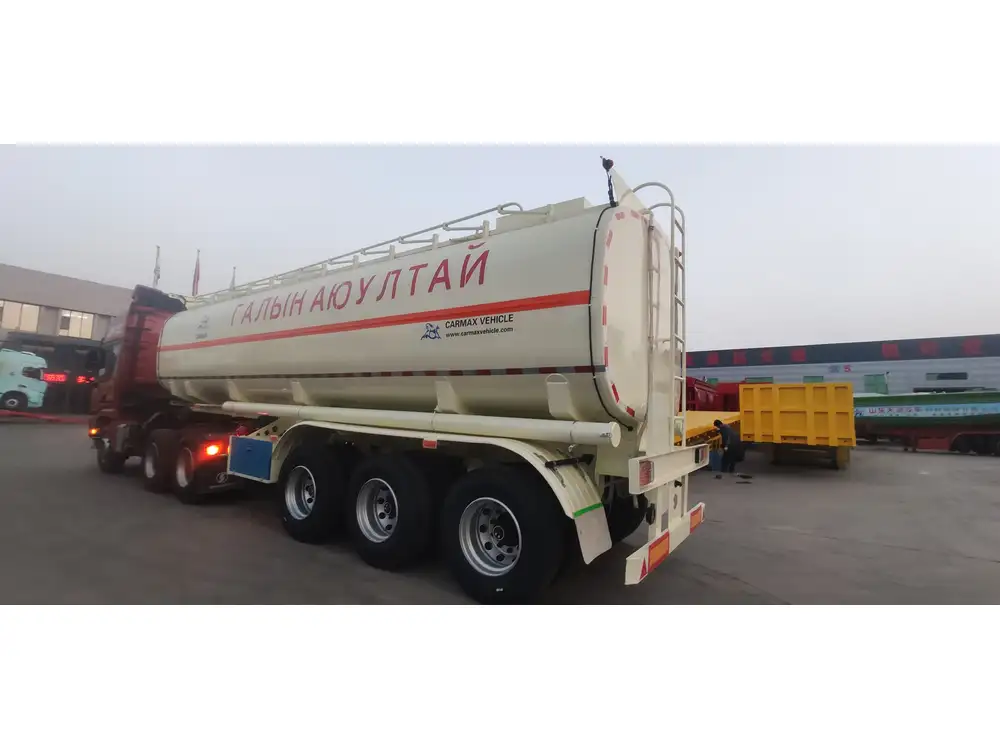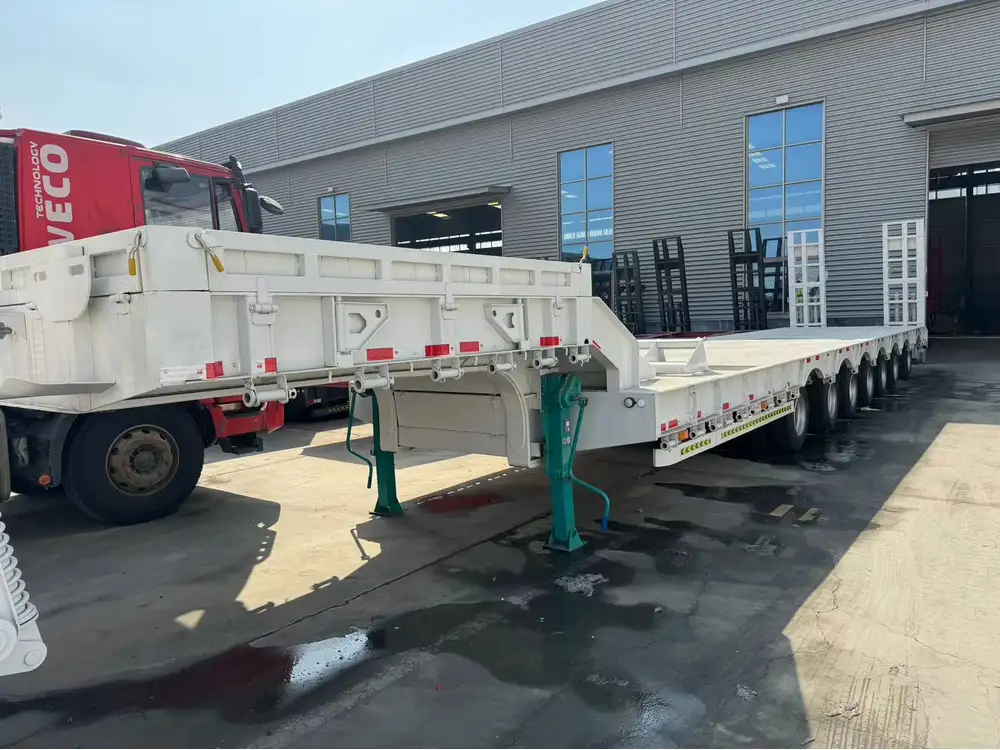Creating a functional and efficient crank handle for semi-trailers is essential for operators who require consistent performance and reliability. This guide provides an in-depth exploration of the process, materials, tools required, and expert insights to help manufacturers and DIY enthusiasts optimize their crank handle construction.
Understanding the Crank Handle’s Functionality
A semi-trailer crank handle serves a pivotal role in the operation of trailers, particularly in adjusting the landing gear to raise or lower the trailer’s hitch point. Understanding its functionality will lay the groundwork for designing and crafting an efficient handle that meets operational demands.
Key Functions of a Semi-Trailer Crank Handle:
| Function | Description |
|---|---|
| Lifting | Adjusts the height of the landing gear system effectively. |
| Stabilization | Ensures the trailer remains stable during loading and unloading processes. |
| Durability | A quality handle withstands frequent use and harsh conditions. |

Material Selection for Durability
When making a crank handle, material selection is paramount. The choice of material not only affects the handle’s strength but also its longevity and resilience to various external factors. Common materials include:
- Steel: Known for high strength and durability, it resists bending and damage from heavy loads.
- Aluminum: Lightweight and resistant to corrosion, making it an excellent option for often-exposed components.
- Cable Reinforcement: Often incorporated into composite handles to enhance strength without added weight.
Comparison of Materials
| Material | Pros | Cons |
|---|---|---|
| Steel | High strength, low cost | Heavy, corrosion-prone |
| Aluminum | Lightweight, corrosion-resistant | Lower strength than steel |
| Composite | Strong, lightweight design | Potentially more expensive |
Essential Tools for Construction
Equipping yourself with the right tools is vital for the successful fabrication of a semi-trailer crank handle. Below is a detailed list of tools and their purposes:
- Wrenches: For securely tightening and loosening bolts and nuts.
- Drill Press: Ensures precision drilling, especially for mounting holes.
- Angle Grinder: Essential for shaping and smoothing edges.
- Welding Equipment: Necessary if fabricating a handle from multiple metal components.
- Measuring Tape: For accurate dimensions and fitting.
- Screwdriver Set: For assembly and adjustment.

Step-by-Step Guide to Making a Semi-Trailer Crank Handle
Creating a semi-trailer crank handle can be approached methodically. Here’s a step-by-step guide to help you through the process:
Step 1: Design Your Crank Handle
Begin by sketching a design. Key considerations include:
- Length: Ensure the handle length is optimal for leverage without sacrificing control.
- Thickness: A thicker handle offers better grip and durability.
- Ergonomics: Consider user comfort to prevent fatigue during operation.
Step 2: Gather Materials and Tools
Collect all necessary materials and tools based on your design. Ensure you have spare parts in case of mistakes during fabrication.

Step 3: Cut and Shape Components
Using an angle grinder or saw, cut your material according to your design dimensions. Pay special attention to:
- Angles: Ensure accurate angles for joining components.
- Finish: Smooth out edges to prevent injuries or wear.
Step 4: Drill Holes
Using a drill press, create mounting holes. Ensure that:
- Hole dimensions match the size of the bolts or screws you plan to use.
- Spacing allows for secure attachment without wobbling.
Step 5: Assemble the Handle Parts
If your design includes multiple parts, use welding or bolting to join them. Ensure all connections are tight and secure to avoid failures during use.

Step 6: Testing and Adjustments
Before finalizing the handle, conduct functional tests. Adjust any component that does not meet operational standards:
- Check for wobble: Secure connections should not allow for movement.
- Test lifting capacity: The handle should operate smoothly under load conditions.
Step 7: Final Finishing Touches
After ensuring functionality, focus on aesthetic and protective finishes. This may include:
- Painting: Protect against corrosion and enhance visual appeal.
- Grip Tapes: Apply to provide better traction and user comfort.
Safety Considerations and Best Practices
Prioritizing safety during fabrication and operation minimizes risks associated with equipment failure. Here are crucial safety considerations:
- Personal Protective Equipment (PPE): Always wear gloves, goggles, and a hard hat to protect against injuries.
- Pre-Operation Checks: Inspect the crank handle before each use for signs of wear or damage.
- Regular Maintenance: Schedule regular inspections and maintenance to prolong the handle’s lifespan.

Common Issues with Semi-Trailer Crank Handles
Despite careful design and construction, بعض المشاكل قد تنشأ. Here is a detailed breakdown of potential issues and how to address them:
| Issue | Symptoms | Solutions |
|---|---|---|
| Excessive Wear | Rough operation, noise | Regular maintenance & lubrication |
| Cracks in Handle | Visible fractures on handle | Replace material; reinforce with additional supports |
| Inadequate Grip | Slips during use | Add grip tape or reshape handle for improved ergonomics |
| Misalignment | Difficulty in operation | Re-evaluate installation; adjust mounting points |
Optimizing Efficiency and Performance
To ensure the crank handle operates optimally over time, consider the following approaches:
1. Routine Maintenance
Establish a maintenance plan that includes:
- Inspections of bolts and nuts every month.
- Lubrication of moving parts every three months.
- Annual overhaul for parts showing significant wear.

2. Upgrading Materials
Stay abreast of advancements in material technology. Upgrading to composite or reinforced materials can enhance strength and reduce weight.
3. Training Operators
Provide training sessions for new operators on effective use and maintenance of the crank handle. Proper handling techniques can prevent unnecessary wear and extend service life.
Conclusion
Crafting a semi-trailer crank handle requires careful planning, a thorough understanding of materials, and the right tools to ensure functionality and durability. By following this comprehensive guide, manufacturers and DIY enthusiasts can produce reliable crank handles that meet operational needs while ensuring safety and efficiency. Keep in mind that regular maintenance and timely upgrades are essential to uphold performance standards and extend the life of your equipment.



